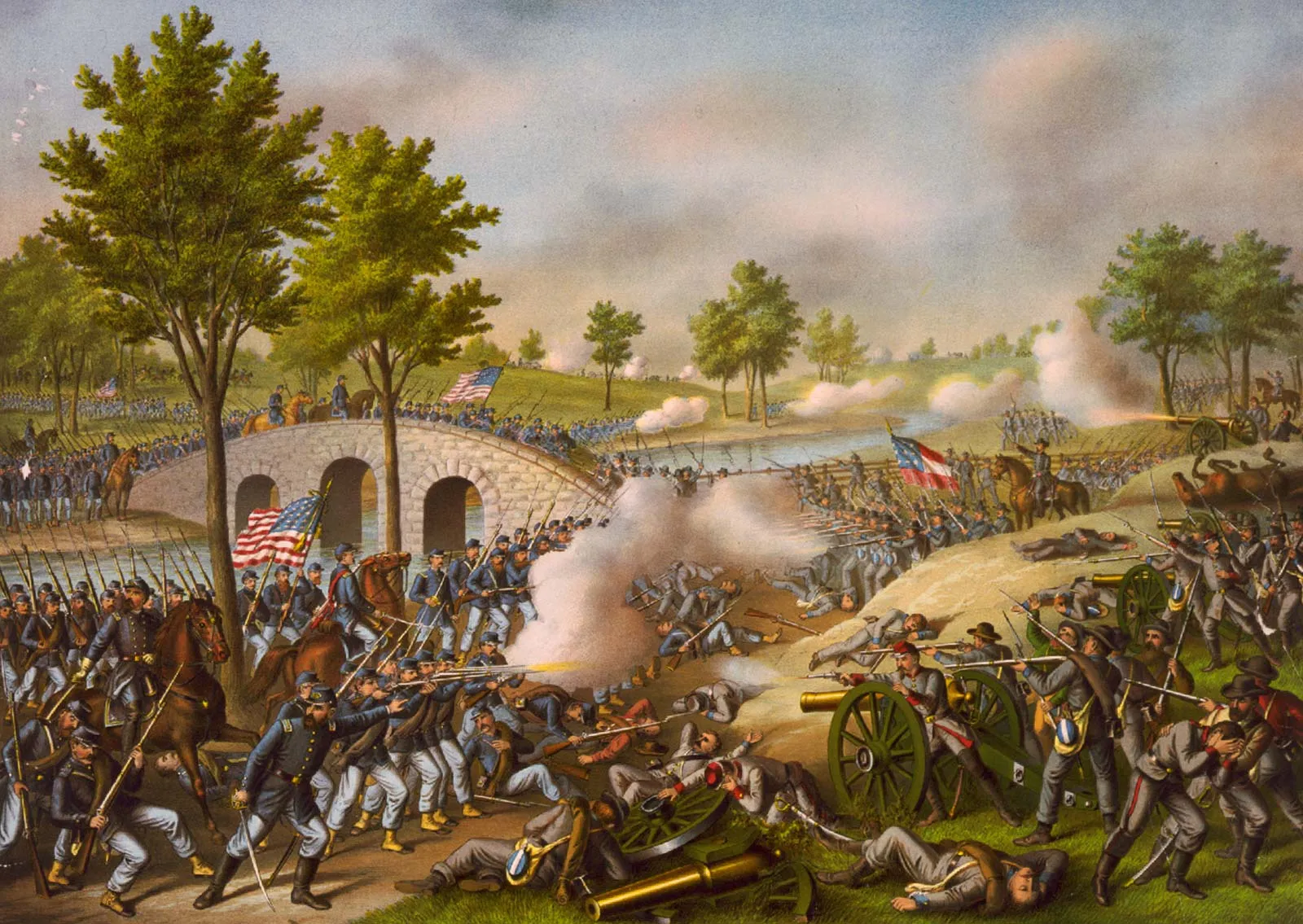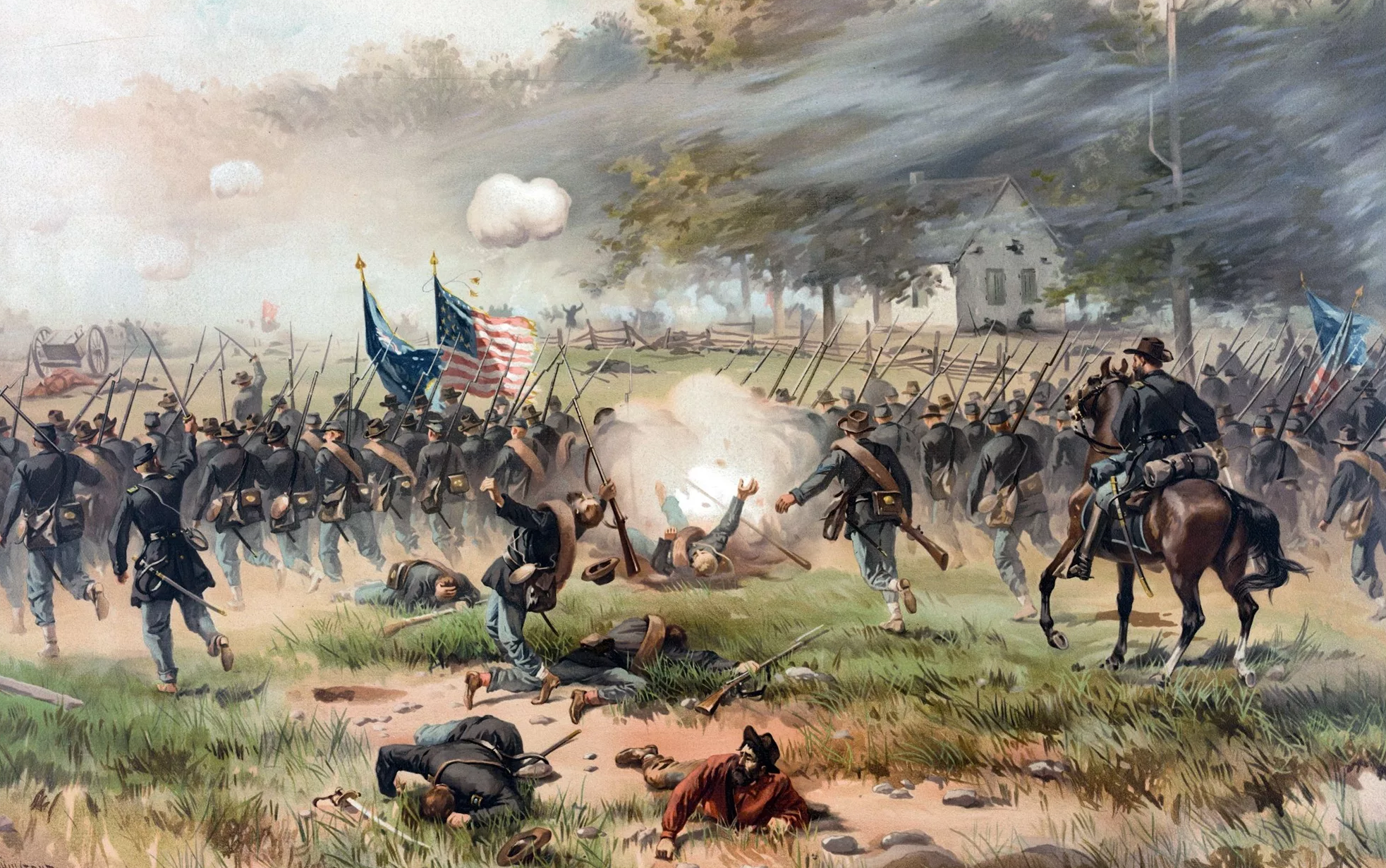The early days of the Civil War were some of the darkest for the Union. The Confederate Army won many of those early pivotal battles, and where the Union did see success, it often failed to follow up on them. What so many Americans in the North believed would be a short war, a spanking for the unruly South, was turning into a long, drawn-out bloodbath – and things would get much worse before they got better.

The Turning Point for European Recognition
The Confederates needed a hard-fought, decisive victory over the Union if they were going to get recognition from European powers. Meanwhile, the Union needed to prove to Europe that the Confederate States had little to no chance of success and weren’t worth intervention. The South had one of the most capable commanders of the day in Gen. Robert E. Lee and his Army of Northern Virginia. In contrast, the Union had Gen. George B. McClellan, who was capable but feckless.
Robert E. Lee’s Invasion Begins the Battle of Antietam
On Sept. 3, 1862, Lee’s Army invaded Maryland at the head of some 55,000 men with the goal of taking the war to the enemy, capturing vital food stores, and proving to the world that the Confederacy could win. McClellan moved to meet him with the 87,000-strong Army of the Potomac. He even had Lee’s entire plan of attack discovered by Union soldiers and sent to their general. But the overly cautious McClellan dawdled, nearly negating the intelligence advantage. The two met at Antietam Creek in Maryland, resulting in the deadliest one-day battle in American military history.

The rebel army boasted a veritable “who’s who” of military leadership. Under Lee, Maj. Gen. James Longstreet and Maj. Gen. Thomas J. “Stonewall” Jackson commanded wings of infantry. Brig. Gen. John G. Walker and John Bell Hood commanded two of his five infantry divisions and a cavalry division under Maj. Gen. J. E. B. Stuart. But where the southerners had leaders, the northern forces had something far more important: men, supplies, and weapons, all critical in the battle that was to come.
It was McClellan who evened the playing field for Lee, who only fielded an estimated 30,000-45,000 troops at Antietam. Though arriving at the battle with more than 53,000 troops, the Union’s commander set up his headquarters so far from the fighting that he could not control the individual corps, and he failed to give every commander the overall plan of attack. So when the Union troops made their move, they essentially attacked the rebel positions piecemeal, allowing Lee to move his forces to help repel each assault.
Union Forces Endure a Bloody Stalemate in the Battle of Antietam
At 5:30 in the morning, Maj. Gen. Joseph Hooker began the attack on Lee’s left flank with the Union I Corps, outnumbering Stonewall Jackson’s rebel batteries. As they emerged from the woods, they entered Miller’s Cornfield, and a massive artillery duel began as the rebels launched a head-on counterattack. After two hours of fighting, the Confederates fought the Union to a bloody stalemate, taking massive losses in the effort.
In the afternoon, the Union began to assault the Confederate center, where a sunken road dominated the enemy’s defensive posture. The Confederates used makeshift earthworks to try and repel the attackers, who had to fight their way up the road. Lee was forced to use his reserves to bolster the center, but Union troops eventually fought their way into an enfilade position, pouring fire on the rebel defenders. They fell back, but the Union again failed to press the advantage. The volume of casualties taken on the sunken road earned it the nickname “Bloody Lane,” leaving 5,600 men dead and wounded, two to three bodies deep.

The afternoon saw a new assault from Burnside, as Union troops attempted to capture a stone bridge at the southernmost crossing of the creek. The approaches to the bridge were in open country while its defenders enjoyed the cover of nearby trees. It took three assaults on the bridge as well as a Union move to cross the creek two miles downstream to dislodge the rebels, but the Confederates only withdrew because they were low on ammunition.
The bottleneck created by the bridge allowed Lee to once again move troops from other areas of the battlefield to bolster its defenses. When Confederate Gen. A.P. Hill arrived to the fighting with thousands of reinforcements, Burnside was forced to fall back and defend the bridge, again unable to press his gains.
The Battle of Antietam had no significant gain for either side, but Lee’s Army of Northern Virginia lost 25% of its strength. The losses forced him to retreat back to Virginia and abandon his invasion of the North, along with any hope of European intervention. The number of men at Antietam is estimated to be as high as 132,000 total, with 22,717 men killed, wounded, or missing.
Read About Other Battlefield Chronicles
If you enjoyed learning about the Battle of Antietam, we invite you to read about other battlefield chronicles on our blog. You will also find military book reviews, veterans’ service reflections, famous military units and more on the TogetherWeServed.com blog. If you are a veteran, find your military buddies, view historic boot camp photos, build a printable military service plaque, and more on TogetherWeServed.com today.

Blog is excellent! Great reading.!